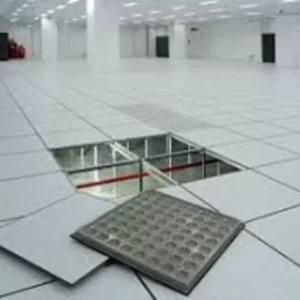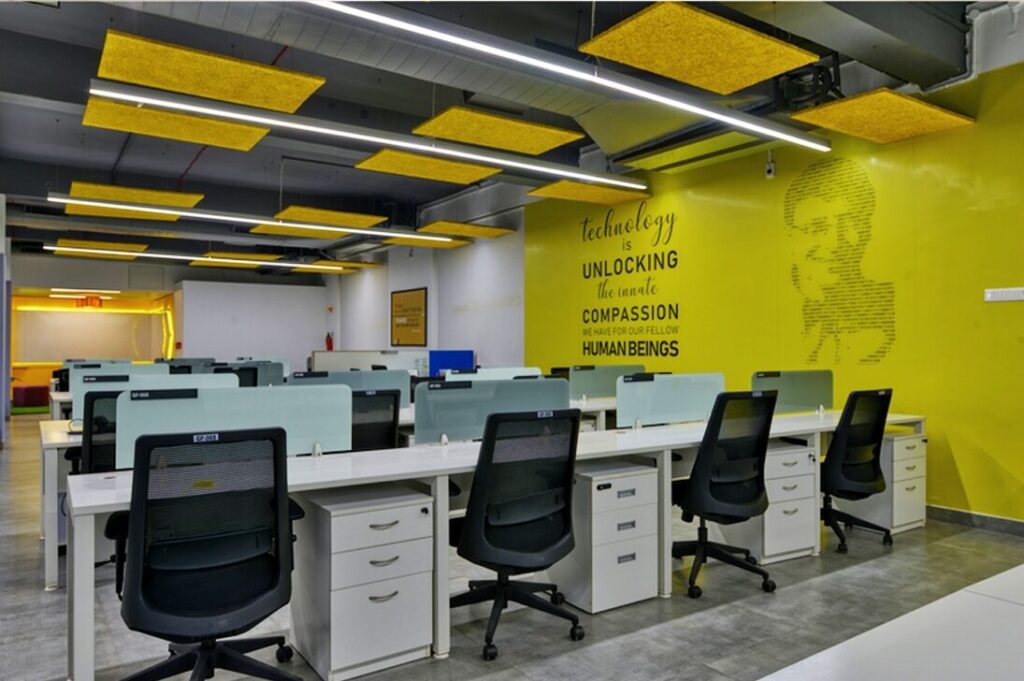The Sustainability of Raised Access Flooring
Introduction
In today’s rapidly evolving world, sustainable practices are becoming increasingly important in various industries. One such area that has witnessed a significant shift towards sustainability is construction and building design. Raised access flooring is a versatile solution that offers several benefits, including improved accessibility, flexibility, and efficient space management. However, it is essential to evaluate the sustainability aspects of raised access flooring to ensure its long-term environmental and social impact. This article explores the sustainability of raised access flooring feature and highlights its benefits in creating environmentally friendly and adaptable spaces.

Understanding Raised Access Flooring
Raised access flooring is a system of elevated floor panels supported by pedestals. It creates an accessible void beneath the flooring surface, which allows for the easy installation and maintenance of building services, such as electrical wiring, data cables, and HVAC systems. This flexible flooring solution is commonly used in commercial buildings, data centers, and office spaces to provide a modular and adaptable environment.
Environmental Impact of Raised Access Flooring
Raised access flooring offers several environmental benefits. One significant advantage is the reduction in material usage during construction compared to traditional flooring systems. The lightweight design and modular nature of raised access flooring result in lower resource consumption, minimizing the ecological footprint.
Energy Efficiency and Thermal Performance
The use of raised access flooring contributes to energy efficiency within buildings. The accessible void beneath the floor surface allows for the installation of efficient insulation materials, promoting better thermal performance and reducing energy consumption for heating and cooling. The thermal insulation properties of raised access flooring help maintain a comfortable indoor environment while minimizing the need for excessive heating or air conditioning.
Waste Reduction and Reusability
Sustainable construction practices prioritize waste reduction and reusability. Raised access flooring aligns with these principles by minimizing waste generation during installation and allowing for easy reconfiguration. The modular components of the flooring system can be disassembled and reused in different areas or repurposed in future building projects. This reduces the demand for new materials and helps conserve resources.
Enhanced Indoor Air Quality
Indoor air quality is a crucial aspect of sustainable building design. Raised access flooring provides a space for efficient air distribution, ensuring proper ventilation and minimizing the accumulation of pollutants. The accessible void allows for the integration of air circulation systems, improving air quality and creating a healthier indoor environment for occupants.
Social Sustainability and Flexibility
Raised access flooring promotes social sustainability by offering flexible spaces that can adapt to changing needs. As businesses evolve and technologies advance, the ability to reconfigure floor layouts becomes essential. Raised access flooring enables easy modification of the floor plan without disrupting the entire infrastructure, allowing businesses to accommodate new requirements and optimize space utilization.
Cost-Effectiveness and Longevity
While sustainability focuses on environmental and social aspects, it is equally important to consider economic factors. Raised access flooring offers long-term cost savings due to its durability and ease of maintenance. The ability to access building services without extensive renovation reduces operational costs and ensures a longer lifespan for the flooring system, making it a cost-effective solution in the long run.
Integration with Smart Building Systems
Raised access flooring aligns with the emerging trend of smart building systems. The accessible void beneath the floor surface provides a convenient space to integrate various technologies, including sensors, cables, and power outlets. This integration facilitates the implementation of smart features such as energy management systems, occupancy sensors, and automated controls, further enhancing the sustainability and efficiency of the building.
The Future of Sustainable Raised Access Flooring
As sustainable practices continue to gain momentum, raised access flooring is expected to play a vital role in future building design. Advancements in materials, such as recycled and renewable options, will further enhance the sustainability of raised access flooring. Additionally, the integration of digital technologies and smart building systems will provide new opportunities for optimizing energy consumption, space management, and user comfort.
Conclusion – The Sustainability of Raised Access Flooring
Raised access flooring offers a sustainable and adaptable solution for modern building design. Its environmental benefits, energy efficiency, waste reduction, and improved indoor air quality make it a compelling choice for sustainable construction projects. With its ability to accommodate changing needs and integrate with smart building systems, raised access flooring ensures long-term sustainability and flexibility. Embracing this innovative flooring solution contributes to the creation of environmentally friendly, efficient, and socially responsible spaces.
Frequently Asked Question- The Sustainability of Raised Access Flooring
- Are raised access floors suitable for residential buildings?
Answer: Raised access flooring is primarily used in commercial buildings and spaces with high infrastructure demands. While it can be installed in residential settings, it may not be the most cost-effective solution for typical homes.
- Can raised access flooring support heavy equipment and machinery?
Answer: Yes, raised access flooring systems are designed to support heavy equipment and machinery. The load-bearing capacity of the floor panels and pedestals ensures structural integrity and stability.
- How long does raised access flooring last?
Answer: When properly maintained, raised access flooring can last for several decades. Regular inspections and maintenance help extend its lifespan and ensure optimal performance.
- Can raised access flooring be customized to match interior aesthetics?
Answer: Yes, raised access flooring is available in various finishes and designs, allowing customization to match the desired interior aesthetics of a space.
- Are there any limitations to using raised access flooring?
Answer: While raised access flooring offers numerous benefits, it may not be suitable for all building types and applications. It is crucial to consult with professionals to determine if it aligns with specific project requirements and objectives.
Other Products

Pet polyester acoustic panels

Wood wool board

Magnesium oxide board
Contact Us
Mobile: +919008400701 / 705
Email: sales@jayswalgroup.com

Visit Us
Address:
#6, 10th B Cross, Jayswal Center, KHB Main Road, Kaveri Nagar, Kanakanagar, RT Nagar, Bangalore – 560032, Karnataka, India.
Other Websites: